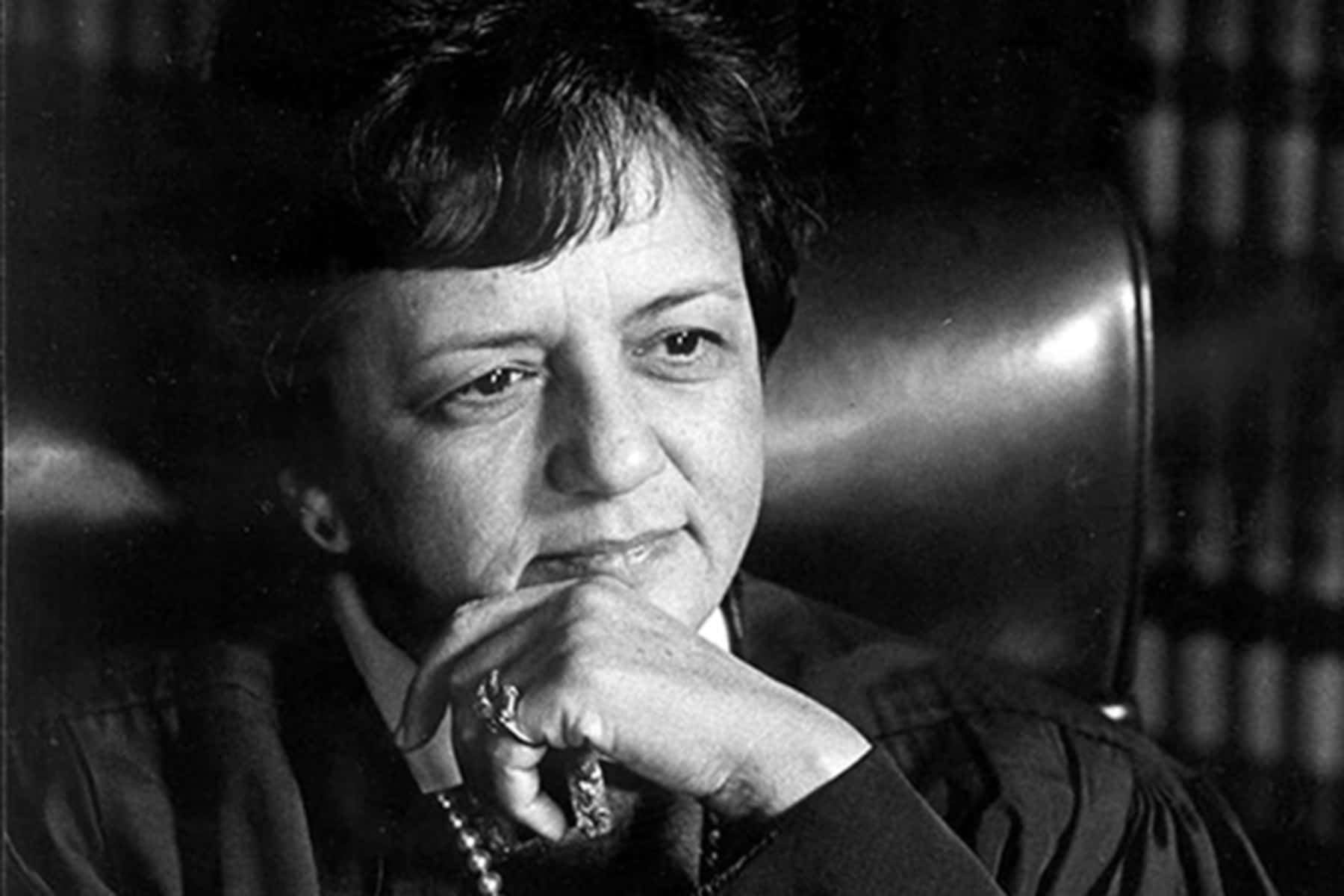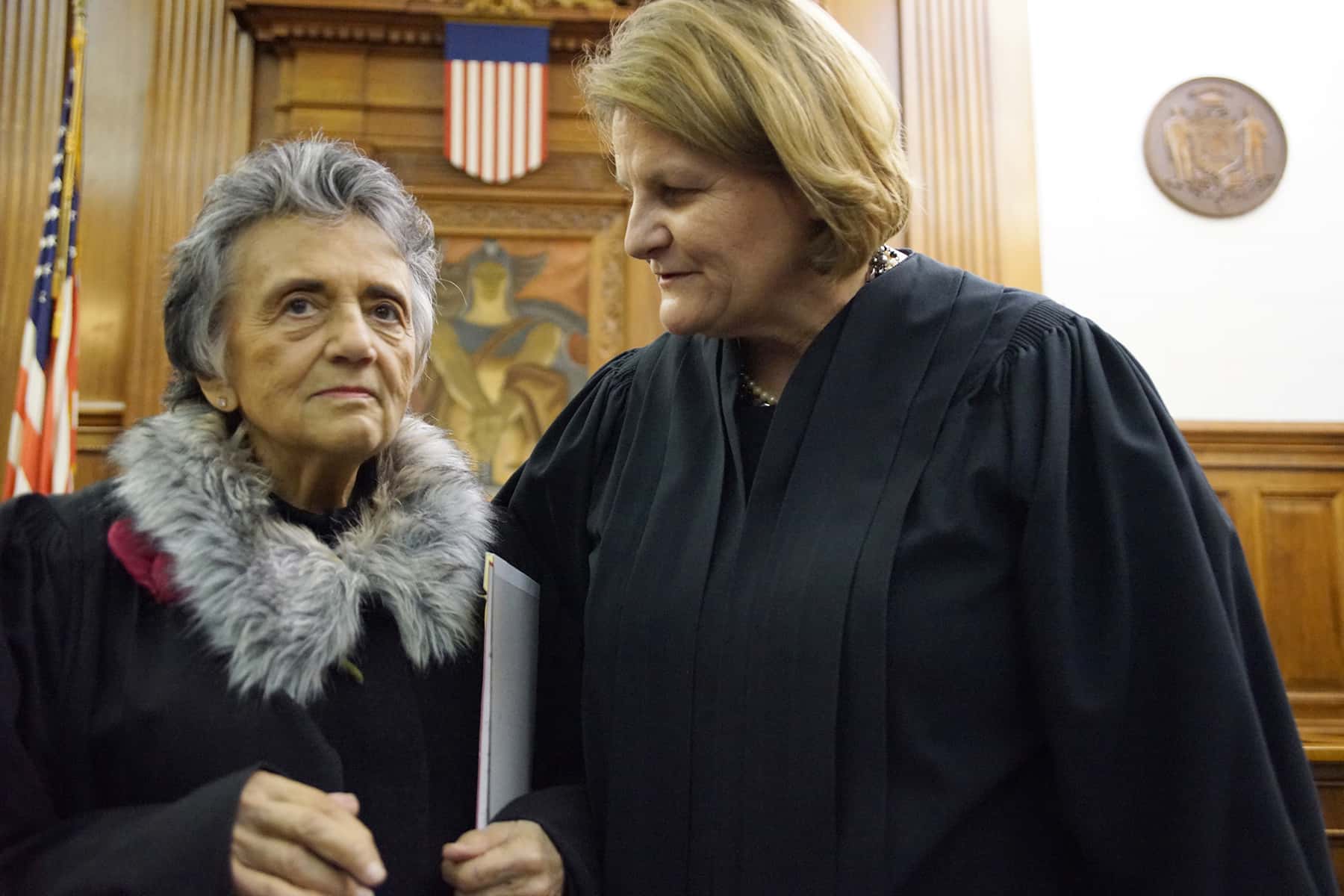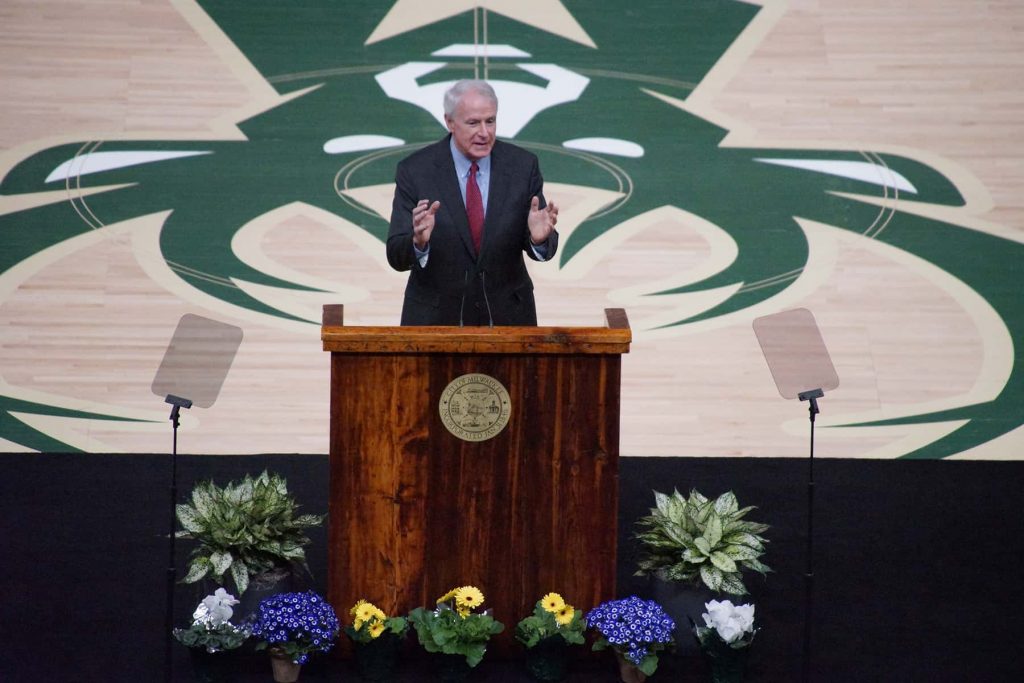
Chief Justice Emerita Shirley S. Abrahamson, a monumental and historic figure in Wisconsin’s judicial and public service history, died at the age of 87 of pancreatic cancer on December 19.
During her fourth 10-year term, she became the longest-serving justice on the Court – almost half that time serving as chief justice. She was the first woman to sit on the Court when Governor Patrick Lucey appointed her to the high court in 1976. She was short-listed twice for presidential appointment to the U.S. Supreme Court.
Breaking glass ceilings and longevity have their places. But it is the content of those 43 years on the bench that matters: Abrahamson’s leadership, scholarship, mentorship, and friendship for the people of Wisconsin constitute her true legacy.
The statistics of her judicial career are stunning. She participated in more that 3,500 written decisions, herself drafting over 530 majority written opinions, over 490 dissents, and over 325 concurring opinions. She authored over 40 law review articles, administered the Attorney’s Oath to thousands of law students (including this author), and the Judicial Oath to hundreds of judge-elects (including this author. She delivered thousands of speeches and academic lectures, and reated over 150 cutting-edge court administration initiatives to keep the court current, agile, accessible and independent. And, she received fourteen honorary Doctorates of Law, added to her actual Doctor of Juridical Science, conferred by the University of Wisconsin- Madison, 1962.
She was famous for her indefatigable work ethic, and commitment to public service and judicial independence. Nationally and internationally she was a thought leader on the jurisprudence of state constitutionalism, individual rights and labor rights as well as on government accountability particularly through public access to the courts, open records, and open government principles.
Upon Abrahamson’s retirement in 2019, U.S. Supreme Court Associate Justice Ruth Bader Ginsburg, honored her in a video message stating “[a]mong jurists, Shirley Abrahamson ranks with the very best, the brightest and most caring, the least self-regarding. She never forgets that law exists to serve all the people composing society, not just those in privileged positions. Wisconsin was fortunate to have her steady hand at the helm of its Judiciary. During her long tenure, she has inspired legions of law graduates to follow in her wake – to pursue justice, equal and accessible to all.” Justice Ginsburg died earlier this year, also of pancreatic cancer.
Chief Justice Emerita Abrahamson’s Career Trajectory
Being the first woman to serve on the state supreme court garnered much media coverage at her investiture and speculation about her public service in the context of her gender. As an important historic milestone for equal rights, her appointment was significant if not controversial—some quarters were concerned that her gender would affect the deliberations, collegiality, and direction of the court. However, as the decades would reveal, her influence on the direction of the court had little to do with gender.
Her influence took parallel paths: 1) a scholarly perspective on jurisprudence and 2) an unparalleled work ethic and a judicial opus that became her personal hallmark. Many law students, law clerks, and after-hours custodial staff toiled with her in moonlit chambers. It was well-known that just because the Chief might have a keynote address to deliver at a seven o’clock dinner did not mean she wouldn’t be back in the Court’s wing of the Capitol at 10:00 p.m.
As a justice and a hard-working public servant, Abrahamson became a mentor and model for the emerging numbers of women entering law school and practicing law—trailblazing a path to succeed in a still male-dominated profession. One famous anecdote of gender discrimination she overcame involved her clients and balancing the traditions of effective advocacy and “client courting.” As a young lawyer, she was excluded from eating lunch at the private, male-only Madison Club. After her powerful clients complained and the newspapers heard, the men-only policy expired.
Abrahamson’s first written opinion was unanimous. More notable were her first dissents for which she would become noted nationally; she showed early confidence to break stride with the majority. In her first term, she was the lone dissenter in 9 of 10 decisions decided. Over four decades and with more than 1300 written opinions, her evolving jurisprudence appeared in the majority and dissents, according to the shifting balance of the court and law itself over time.
In the first dissent of her career, Justice Abrahamson examined whether police conduct crosses the constitutional line, ruling that police did not have reasonable suspicion to believe the defendant committed a crime (and therefore were not legally justified) to search an African-American man – later convicted of carrying a concealed weapon and armed robbery, as party to the crime. In her last year on the court, she wrote a concurring opinion on a near-identical Fourth Amendment issue. She asserted that dissents are important on several levels, a justice just doesn’t dissent to dissent. It takes a lot of effort but she asserted it’s a good process for the bench and bar to follow what the disagreement is about.
Abrahamson’s jurisprudence is filled with opinions that unsettle intrusions on individual rights; warrantless searches; the state failing to meet its heavy burdens of proof; denials of public benefits, labor rights, open records, public access, and open government. Her judicial philosophy is simple: examine the facts, the law, and the precedent. Apply the facts to the law and the precedent as one understands them, and one reaches a decision.
Chief Justice Emerita Abrahamson’s Scholarship
Abrahamson’s thinking and academic writings garnered her national and international attention. Her scholarship on state constitutionalism, or “new federalism,” placed her among the country’s preeminent judicial scholars.
“Her legal scholarship has brought her international acclaim, leadership positions in national organizations, fourteen honorary doctor of law degrees, and lecture requests from around the world.” – Associate Justice Ann Walsh Bradley of the Wisconsin Supreme Court
As one of the longest-serving justices in the nation, the new federalism jurisprudence arose most credibly from her pen. The jurisprudence provides that the federal Constitution affords “minimum” guarantees of individual rights, but judges can look to state law, and state constitutions, as providing more layers of protection.
“Justice Abrahamson is a brilliant legal thinker, a powerful writer, and trailblazer in the law,” ….She’s been a champion of equal justice, individual rights, and an independent judiciary. We have different views on legal interpretation and the role of the courts, but her work always made mine better. She has made an outsized and lasting mark on our state law.” – Judge Diane Sykes of the U.S. Court of Appeals for the Seventh Circuit
Chief Justice Emerita Abrahamson’s Arc of Court Reform
Under the state constitution, the chief justice is the justice systems’ administrative authority, operating pursuant to procedures adopted by the Supreme Court. As such, Abrahamson became the number one Supreme Court justice in the nation in cutting-edge court administration
Abrahamson was instrumental in starting court-related volunteer programs that give the public more access to the court system. From teen courts to conflict resolution centers, from domestic abuse services to legal assistance clinics, Abrahamson tapped a “shoestring budget” to expand, support, and help create new programs in counties statewide. Her Court with Class program brought thousands of high school students statewide to witness the Supreme Court’s oral arguments and learn more about the justice system in action.
Her Justice on Wheels program took the Court to other counties to give citizens statewide the opportunity to witness oral arguments and visit with the justices in person. Her national reputation with national contacts help establish such innovative programs. The fourth edition catalog of those programs, published in 2013, identified nearly 150 programs in operation. She brought jurists together to meet and discuss matters of importance in improving the administration of justice” and the organization and operation of state courts.
Technologically astute and forward-thinking, she initiated an accessible and affordable automation system for case recording and for complete public access to public records. She ordered public access to court discussions about administrative matters and court rulemaking, which for decades were chamber-only discussions. Her record on open records was legendary.
As a woman of the people, able to talk to people from all walks of life, she created the Court interpreter, training and certification program for language access. And she got a funding model in place that supports this fundamental need of justice: to understand court proceedings. It harkens back to her school days when she taught her immigrant parents English. This program really demonstrated her humility in the face of injustice and her compassion for those facing the justice system.
Justice Ann Walsh Bradley is quoted upon the Chief Justice Emerita’s retirement as saying that “her body of work shows a commitment to individual rights, transparency and government accountability, and cutting-edge administrative leadership that moved Wisconsin’s court system to the forefront.”
Chief Justice Emerita Abrahamson’s Timeline
- Was born and raised in New York City, the child of immigrants from the current Poland who traveled to the United States while her mother was pregnant. She helped her parents learn English.
- At age 6, Abrahamson told her parents she wanted to be a lawyer.
- Graduated from New York University in 1953, Bachelor of Arts magna cum laude. She both graduated undergraduate school and began law school at the age of 19.
- Graduated Indiana University Law School in 1956, Juris Doctor with high distinction, She finished first in the class in 1956. She was the only woman in her graduating law school class. When she graduated, women constituted only 3 percent of law school students, nationwide.
- Came to Wisconsin when her husband, the internationally renowned scholar Dr. Seymour Abrahamson, had secured a post-doctoral fellowship in zoology at the University of Wisconsin-Madison.
- Graduated University of Wisconsin Law School in 1962, Doctor of Juridical Science in American legal history. She joined the U.W. Law School faculty, where she would continue to teach occasional classes while a justice on the court.
- Began practicing law in 1962 at the distinguished Madison law firm LaFollette & Sinykin. Gordon Sinykin and James E. Doyle hired her as the firm’s first woman attorney; later they named her partner.
- Practiced law (and persevered though the micro aggressions of gender discrimination) for 14 years when Gov. Lucey tapped her for the supreme court in 1976, at age 42. In 1996. William Rehnquist, a Wisconsin native and then Chief Justice of the U.S. Supreme Court, swore her as Chief Justice.
- Elected and re-elected four times, always with an opponent and never garnering less than 55% of the vote for ten-year terms. In 1979, President Jimmy Carter’s short-listed her to replace U.S. Supreme Court Justice William J. Brennan Jr.; in 1993, President Bill Clinton’s short-listed her to replace U.S. Supreme Court, Justice Byron White.
© Photo
Shirley S. Abrahamson and Lee Matz















